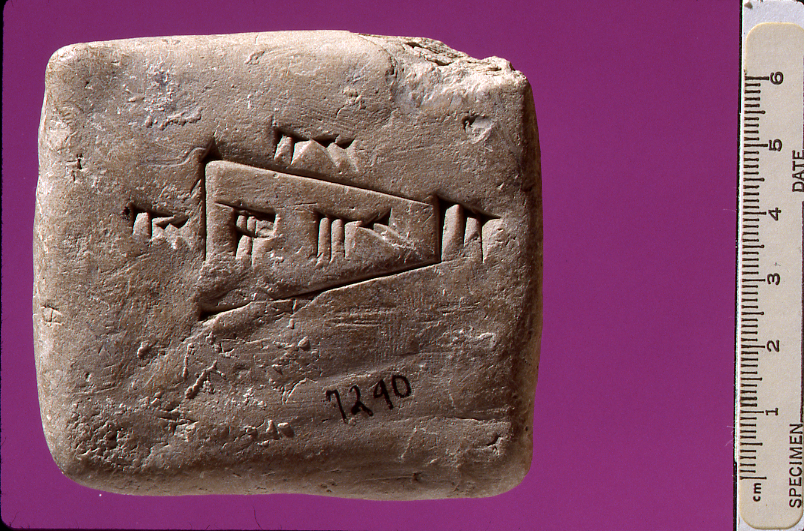Homework 3
Reminder: You can (and are encouraged to) discuss problems with your classmates. Then write down the answers by yourself.
- List different media used by ancient civilizations to record mathematics. (For instance, nowadays, one of the media we use is paper).
- Compare the positional number system used in Babylon and the additive number system used in Egypt. What are the advantages and disadvantages of each one of them? In particular, which system is more suitable for doing mathematics.
- In ancient Babylonia, the area of a trapezoiod was computed as average of the sides multiplied by the average of the bases. In the tablet below a trapezoid is displayed. The two non-parallel, opposite sides, have the same length. Compute the area using the ancient Babylonian formula and give the result in Hindu-Arabic numerals.
- How do the numbers 62 and 3 can be distinguished when written in cuneiform?
- Show (with an example) that the formula used in Babylon to compute the area of a quadrilateral is not correct.
- With the clay given in class, make a tablet or a part of a tablet which could have been found in an Iraq archeological site. The table should express mathematical ideas. For example, it could be
- A few lines of a multiplication table.
- An exercise computing the area of a planar figure (for instance, a circle) with numbers different from those we studied in class.
- A tablet similar to the one we studied in class, where the square root of two is approximated, but replacing the "30" on the length of the side of the square, by "20" or other suitable number
Send a photo of your tablet to tablets1@yogile.com if you are in lecture 1 and to tablets2@yogile.com if you are in lecture 2. Make sure that your first name appears in the photo.
- Write down an explanation of the content of your tablet.

Credit image: Frank Swetz, Mathematical Treasure: Old Babylonian Area Calculation, Convergence.
